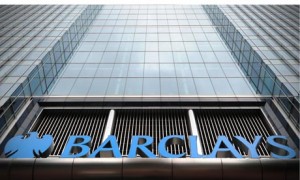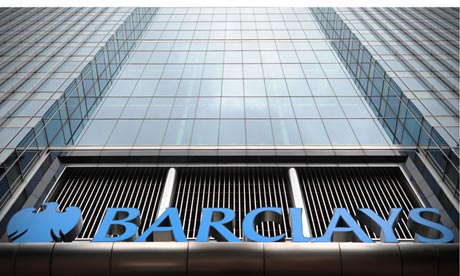
(AFP Photo)
A large, underbanked market makes Egypt an appealing prospect for financial institutions looking for long-term growth, although the effects of ongoing economic and political uncertainty are weighing on some lenders.
On 1 April the international press reported that Barclays, the UK’s second-biggest bank by assets, planned to increase its presence in Egypt by boosting the number of its branches by 10% and entering the Islamic finance segment.
“For us, Egypt is a very important economy,” said Omar Baig, consumer banking director at Barclays Bank Egypt, in an interview. “Our view about Egypt in the long term still remains that it’s a place where we want to be and we want to be a significant player.” Baig added that Barclays could look into acquiring another bank in Egypt if the opportunity arises.
Egypt’s market is also attracting attention from Gulf banks. In December, Qatar National Bank (QNB) agreed to purchase French lender Société Général’s 77% stake in Egypt’s National Société Générale Bank (NSGB) in a deal worth $1.97bn. The same month, Dubai’s Emirates NBD confirmed it would be buying the Egyptian subsidiary of BNP Paribas, another French bank, for $500m.
The Gulf banks and Barclays have shown themselves content to look past Egypt’s instability and lower GDP growth of the past 18 months to the banking market’s more promising medium- and long-term potential.
QNB and Emirates NBD in particular are both considering an expansion into emerging markets to diversify their portfolios and tap into high growth. “Egypt is very much a growth market and this bank has been growing at an average of 15% in the last few years,” Kevin Flannery, Emirates NBD’s international general manager, said at the time of the purchase. “That growth statistic will continue, if not rise, as things settle in Egypt.”
The QNB and Emirates NBD deals were confirmed two months after HSBC, Europe’s biggest bank, announced that it was looking to expand its consumer lending and wealth management business in Egypt.
Egypt holds many attractions for international banks, led by its long-term growth trend. Prior to the domestic revolution and international financial crisis, the economy was achieving growth of around 7% per year.
Banks will also be eyeing the large and growing population of 85 million, which includes a sizeable middle class and significant young segment. Other attractions include opportunities to finance the sectors expected to drive growth once greater stability returns, together with an expanding interest among Egyptians in sharia’a compliant products.
Egypt’s loan-to-GDP ratio stood at 38% at the end of the 2010 fiscal year, which, while not unusual for a country of its income level, indicates considerable potential for growth if incomes rise. However, in the immediate term, the country’s difficulties, which include serious pressure on foreign exchange reserves and the state budget, are taking their toll on the banking sector.
In March, Moody’s downgraded Egypt for the sixth time since the beginning of the revolution to Caa1, the fifth-lowest level, and deep in junk status. With banks heavily exposed to sovereign debt, their holdings of government bonds rose from LE266bn ($38.40bn) at the end of 2010 to LE575bn ($82.98bn) in 2012 according to local press reports, the ratings agency then five days later downgraded the local currency deposits of five of Egypt’s lenders, including three state-owned institutions (National Bank of Egypt, Banque Misr and Banque du Caire).
In the announcement of its decision, Moody’s cited, in addition to the change in sovereign rating, the state’s reduced ability to support the banks and the downgrade of Egypt’s foreign currency deposit ceiling.
While the Central Bank of Egypt has rejected calls for the privatisation of state banks, the difficulties they currently face could make the rationale for consolidation and, potentially, asset sale stronger in the longer term.
Substantial investment from some of the world’s biggest banks can be seen as a vote of confidence in Egypt’s long-term growth trend. However, major players may need to ride out slower growth, currency fluctuations and a degree of uncertainty before nearing their expansion goals, while the going remains tough for less robust financial institutions.




